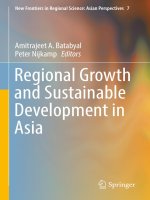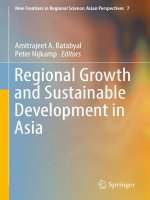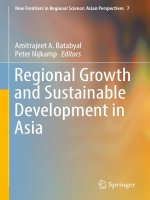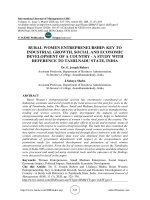Economic growth and economic development 386
Bạn đang xem bản rút gọn của tài liệu. Xem và tải ngay bản đầy đủ của tài liệu tại đây (51.11 KB, 1 trang )
This part of the book covers the basic workhorse models of the theory of economic
growth. We start with the infinite-horizon neoclassical growth model, which we
have already encountered in the previous chapters. A closely related model is the
baseline overlapping-generations model of Samuelson and Diamond, and this is the
topic of Chapter 9. Despite the similarities between the two models, they have quite
different normative and positive implications, and each model may be appropriate
for different sets of issues. It is therefore important to have a detailed discussion of
both.
This part of the book also presents the basic economic growth model with human capital investments. The inclusion of this model is motivated both because of
the increasingly important role of human capital in economic growth and macroeconomics, and also as a way of linking macroeconomic approaches to microdata on
schooling and returns to schooling.
Finally, Chapter 11 introduces the first model of sustained economic growth. It
is contained in this part of the book rather than the next, because it is a model of
sustained growth without technological change. Despite its simplicity, this model
leads to a number of important economic insights and provides a good introduction
to the set of issues we will encounter in the next part of the book.









